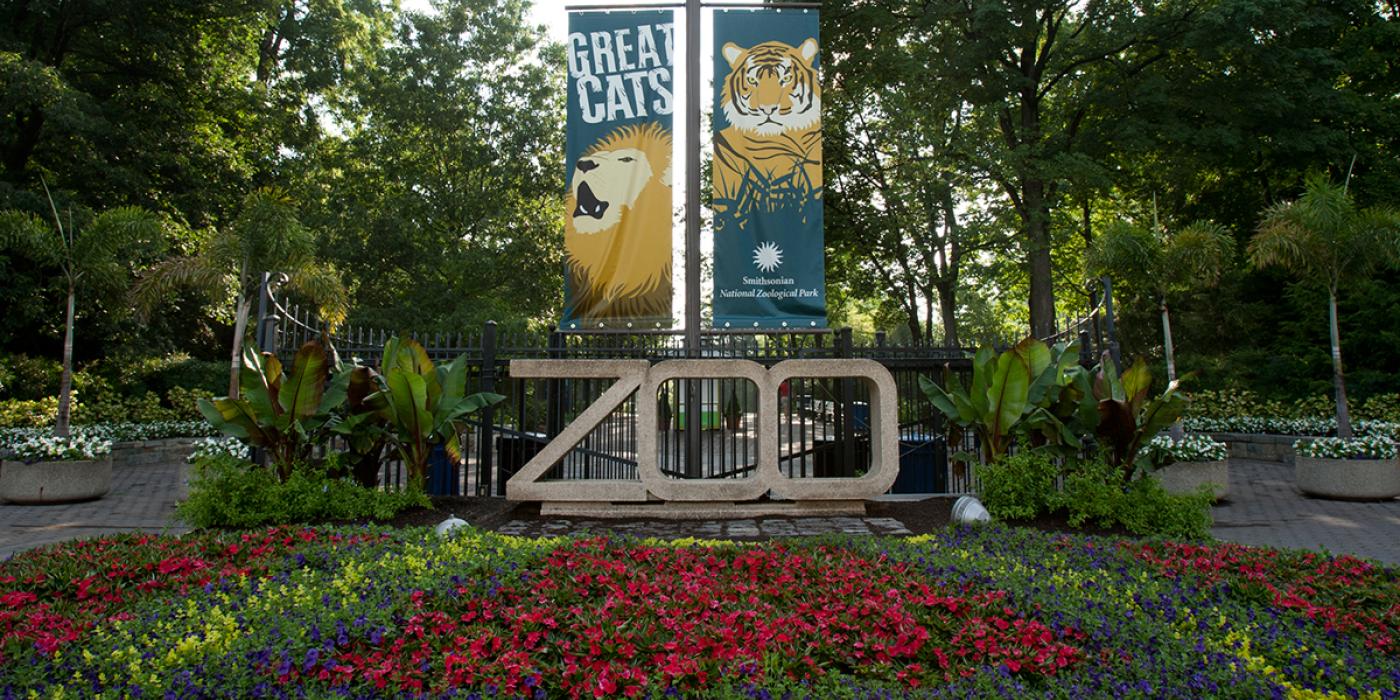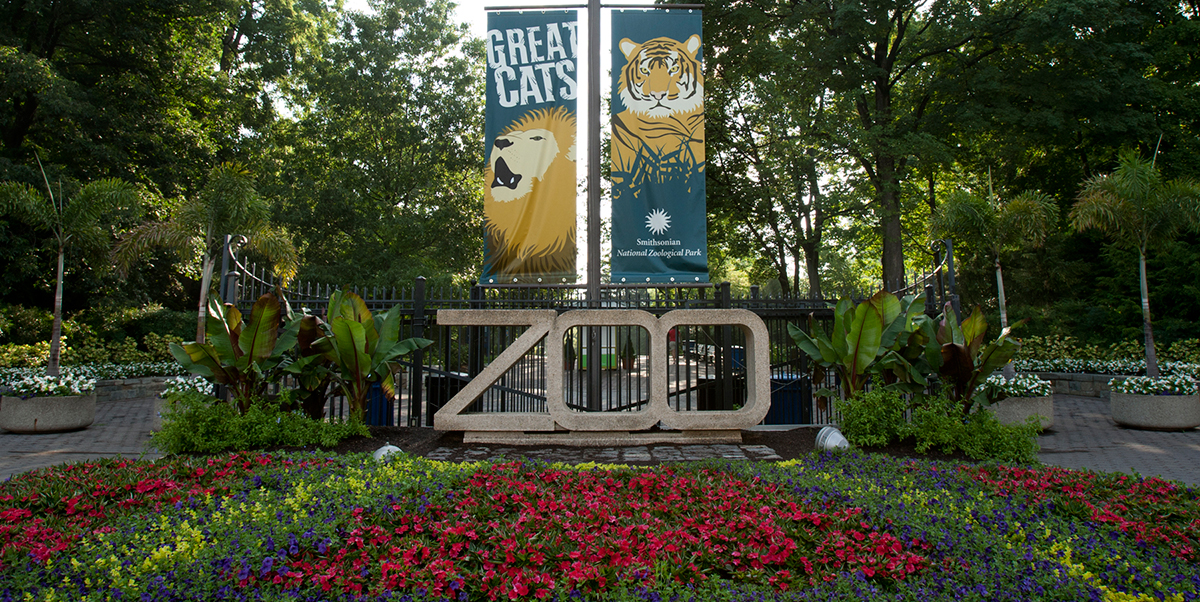Zoo Director's Remarks From the Congresswoman Eleanor Holmes Norton Town Hall Event (March 15, 2023)
Good evening. My name is Brandie Smith, and I am the director for the Smithsonian’s National Zoo and Conservation Biology Institute. Also joining us from the Smithsonian, it’s my pleasure to introduce Julissa Marenco, Assistant Secretary for Communications and External Affairs and Chief Marketing Officer.
We have two campuses, the Zoo, and the Conservation Biology Institute in Front Royal, Virginia. Our animal care experts and scientists care for and study more than 2,100 animals representing almost 400 species, which include some of the planet’s most critically endangered species. For the purposes of this evening, we’re focusing on our Zoo property, which is 163 acres in Northwest, Washington, DC.
Thank you, Congresswoman Norton for inviting me to participate in your town hall meeting and thank you to my DDOT and National Park Service colleagues as well.
Tonight, I know many of you would like to address access to the Zoo property, specifically the multi-use trail that crosses through the Zoo’s property and our free visitor pass system.
Both access issues directly involve the safety of visitors, staff and the animals entrusted to us. The Zoo is consistently identified as the number one destination for families in our area. It brings incredible value to our city and our neighborhood. Above all else, my team and I place, and value, the safety and security of our visitors, staff and animals as our number one priority. Our decisions regarding the trail and our pass system directly relate to this priority, as well as providing the best overall experience to our guests.
Regarding the trail, the National Park Service has jurisdiction for the entire multi-use trail. There is a small segment, just over a half-mile long, that runs through the Zoo property. There is an alternate shorter path, less than a fifth of a mile long, that does not run through the Zoo property, but instead passes through the Beach Drive tunnel.
After being closed as part of the Rock Creek Park Multi-Use Trail Rehabilitation project, the trail reopened on October 1, 2022. The security needs of the Zoo were communicated as part of the trail planning, and we put a lot of thought into how trail users would be impacted by our hours of operation and concluded that we could extend access by one additional hour prior to opening the Zoo and an hour after closing. The reason is that our grounds are staffed appropriately and/or can be monitored by Zoo police. Today, we are now open 8 a.m. to 6 p.m. which means the Zoo’s trail segment opens at 7 a.m. and closes at 7 p.m. During our winter hours, Zoo grounds are open 8 a.m. to 4 p.m. with the trail opening at 7 a.m. and closing at 5 p.m.
We know there are residents that would like the Zoo trail to remain open all the time. I understand. The National Park Service and DDOT did a beautiful job on the renovation. However, there are safety and security reasons that make it prohibitive for us to remain open longer.
USDA and the Association of Zoos and Aquariums require the Zoo to meet industry security standards, of which one requirement is a contiguous perimeter fence. The fence prevents unauthorized persons from accessing the Zoo’s grounds. This protects our animals, our staff, and any person who might inadvertently wander into an unsafe place. It also functions as an additional containment barrier for the animals. For these reasons, I hope it is clear, leaving the Zoo’s gate open any longer is not feasible.
Now let’s talk about how you visit the zoo. When we re-opened during COVID, we implemented a free timed-entry pass system. That policy has been adjusted based on the rise and fall of COVID cases in the DMV area. We learned the value visitor passes can bring to our Zoo and local community and we plan to continue the free entry pass system. The passes – no longer timed - enable us to observe and manage visitor capacity, plan for staffing and guest amenities, and reduce local traffic congestion. In addition to providing a much safer and secure environment, we’re providing a much better experience for all Zoo guests.
The process to obtain entry passes is similar to numerous cultural arts facilities, museums and zoos. Visitors may obtain free entry passes and/or paid parking passes online, via the Zoo’s website, in advance of their visit.
To accommodate members of our community who may have limited access to technology, as capacity allows, a limited number of same-day passes are available at each entrance. When a visitor arrives at the Zoo, all they have to do is inform Guest Services that they require assistance in obtaining a pass, and a trained team member will help them.
Advance knowledge of attendance allows for efficient planning and responsible park operations, especially with regards to staffing and providing guest amenities. Now we can better manage large groups, avoid long lines and traffic blockages on Connecticut Avenue and within the park. In addition to an improved overall experience, this also allows easier access for emergency response.
This takes us back to our priority of improving our safety. In the event of an emergency, passes allow us to have a more accurate count of the number of visitors that would need to be managed or evacuated in the event of an urgent situation. All in all, we have had minimal issues or concerns raised to us about the free entry pass system.
Change is always an adjustment and takes time. I understand this is a change for our local community. It’s my sincere hope that everyone here tonight can appreciate that we have been a vital part of our City since 1891. As the current steward of the Zoo, it’s my duty to ensure that we continually improve, adhere to the highest standards, educate, inspire and keep safe almost two million visitors and hundreds staff annually. And yes, fulfill our conservation mission to protect animals and save species.
Thank you,
Brandie Smith
John and Adrienne Mars Director
Smithsonian's National Zoo and Conservation Biology Institute

